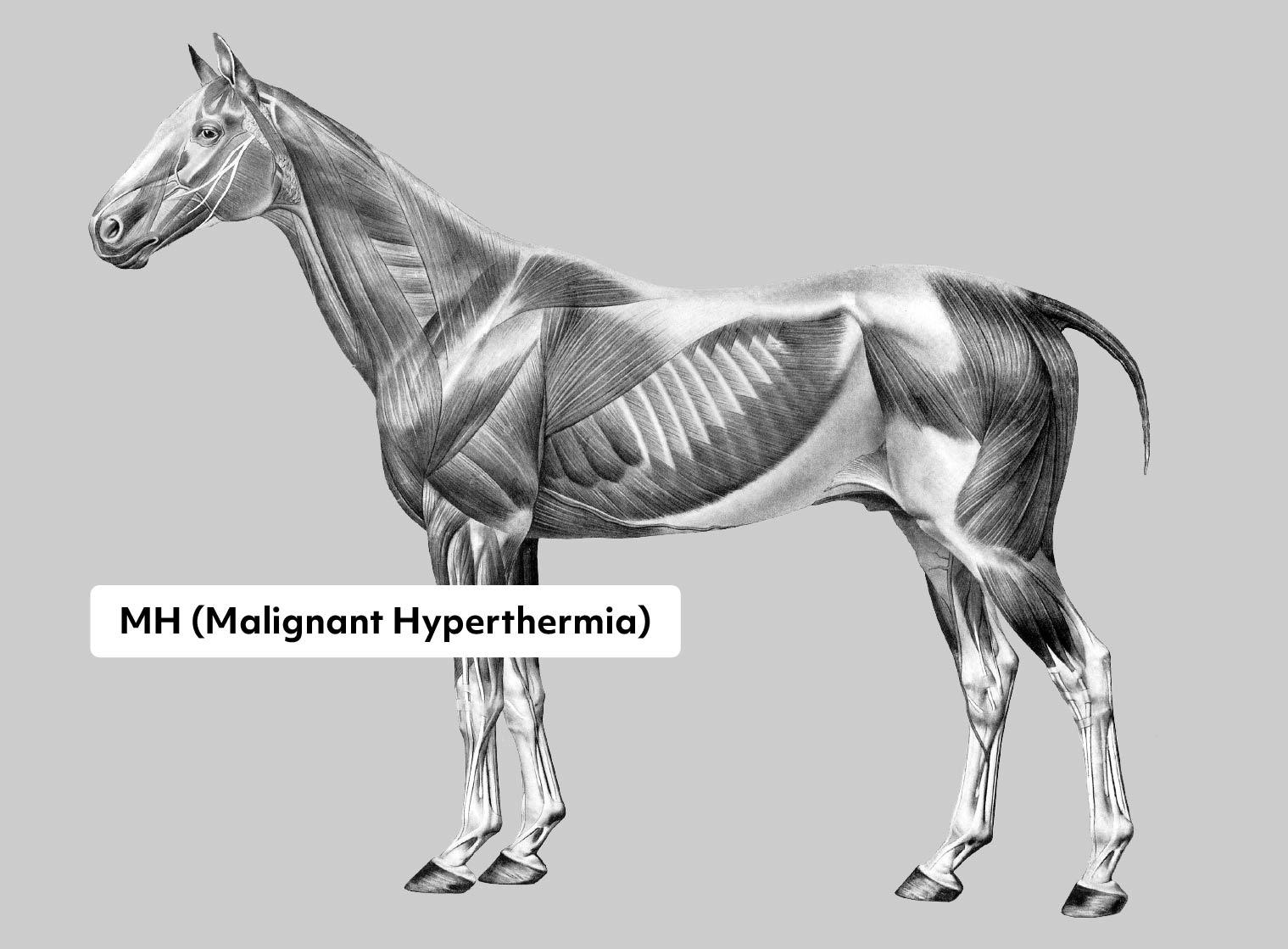Malignant Hyperthermia (MH)
Gene or Region: RYR1
Reference Variant: C
Mutant Variant: G
Affected Breeds: Quarter Horse
Research Confidence: High confidence, findings reproduced multiple studies
Explanation of Results: MH/MH = homozygous for Malignant Hyperthermia, trait expressed MH/n = heterozygous for Malignant Hyperthermia, trait expressed n/n = no variant detected
General Description for Malignant Hyperthermia
Malignant Hyperthermia (MH) is a muscle disorder in which anesthesia, stress, or extreme exercise trigger a hyperthermic state. Symptoms include high temperature, increased heart rate, high blood pressure, sweating, acidosis, and muscle rigidity. If symptoms are not immediately resolved, death is likely to occur. As this condition is autosomal dominant, even horses with a single allele (MH/n) exhibit symptoms. One study has shown that horses with both MH and polysaccharide storage myopathy (PSSM) have more severe clinical symptoms.
Gene Information
RYR1 is involved in the control of calcium channels within the muscle. Mutations in both humans and swine have been shown to cause conditions similar to MH seen in the horse. This mutation is a single base substitution that alters an amino acid, likely affected the function of the encoded protein.
References
Aleman M et al., “Association of a mutation in the ryanodine receptor 1 gene with equine malignant hyperthermia.” (2004) Muscle Nerve. 30: 356-65. PMID: 15318347
McCue ME et al., “Polysaccharide storage myopathy phenotype in quarter horse-related breeds is modified by the presence of an RYR1 mutation.” (2009) Neuromuscul Disord. 19: 37-43. PMID: 19056269
Aleman M et al., “Malignant hyperthermia associated with ryanodine receptor 1 (C7360G) mutation in Quarter Horses.” (2009) J Vet Intern Med. 23: 329-34. PMID: 19220734
More Horse Health
"Warmblood" Fragile Foal Syndrome
"Warmblood" fragile foal syndrome (FFS) is a connective tissue disorder resulting in joint laxity and extremely thin skin that is only loosely connected to the body. The skin is easily torn, resulting in lacerations, hematomas, and seromas across the foal. Affected foals are euthanized shortly after birth.
Androgen Insensitivity Syndrome
Androgen Insensitivity Syndrome (AIS) is an X-linked disorder of sexual development resulting in a female horse with XY chromosomes. Horses with AIS exhibit stallion-like behavior such as agression toward other horses, Flehman response and vocalization toward cycling mares.
Cerebellar Abiotrophy
Cerebellar Abiotrophy (CA) is a degenerative neurological disorder, due to the death of neurons in the brain. Symptoms (head tremors, lack of coordination, wide stances, exaggerated gain, difficulty rising and startling easily), typically appear in foals between six weeks and four months of age.
Chronic Idiopathic Anhidrosis Risk
Chronic Idiopathic Anhidrosis Risk (CIA) is the inability to sweat in response to increased body temperature, (AKA "non-sweater"). This condition is dangerous and sometimes life-threatening for horses, who rely on sweating for 65-70% of their temperature regulation.
